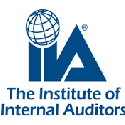Best Ways to implement Corporate Governance in Small Companies

Corporate Governance is the system of rules, practices and processes to facilitate effective, entrepreneurial and prudent management to deliver the long-term success of a company.
The Organization for Economic Co-operation and Development (OECD) defines corporate governance as: “Corporate governance involves a set of relationships between a company’s management, its board, its shareholders and other stakeholders. Corporate governance also provides the structure through which the objectives of the company are set, and the means of attaining those objectives and monitoring performance are determined. Good corporate governance should provide proper incentives for the board and management to pursue objectives that are in the interests of the company and its shareholders and should facilitate effective monitoring”.
Why Corporate Governance matters to Small Companies?
Good governance enhances confidence, value, and idea creation in the company. We need to create the belief that all private or public, big or small companies can compete in an environment where good governance is a business imperative and assist in achieving the organization goals and objective. We need to change the mindset that only public companies can obtain benefits from implementing corporate governance.
Listed companies are bound to follow the Corporate Governance Code, listing regulations, having strong oversight by external shareholders and independent Board of Directors. Management and Owners have their own set of duties and responsibilities. Management commits to ensure that the executives act in responsible and ethical manner to safeguard the interest of shareholders and other stake holders.
In comparison, Small companies are usually owned and controlled by single individuals or by a family. Where, management function is also performed by the owners. Good governance in this context is not a question of protecting the interests of stakeholders. However, it is concerned with establishing a framework of procedures and approach that will impact the performance and long-term viability of company.
Small companies may face challenges in implementing corporate governance as they have to develop their own strategy according to cost and benefits of adopting these policies.
Ways to implement Corporate Governance in Small Companies
In a corporate governance system, it is important to include all stakeholders. An effective governance framework ascertains the distribution of rights and responsibilities among different participants in the company (such as the board of directors, managers, and all and other stakeholders).
Here are the corporate governance best practices for small companies to implement – and it is beneficial for every company/ business.
- Build strong Board of Directors:
Board of Directors should comprises of competent and qualified directors having strong ethics, integrity, and able to perform their duties effectively. A governance framework will define the board’s structure, size, composition, and the process to appoint the directors to the board.
An independent director on the board of a small company is to fill the existing board’s knowledge and experience gaps. Independent directors can be valuable to family-owned companies who can help to mediate conflict and introduce a measure of neutrality to a company’s decision-making.
- Develop a business plan
Small companies need to develop a business plan in writing, with clear goal definition and strategies on fulfillment of those goals. As Niewulis said that “The focal point of corporate governance within small businesses is that all businesses need to set company strategic goals, provide the leadership to put them into effect, supervise the management of the business, and report on stewardship of stockholders and investors.”
- Code of conduct:
Small companies should introduce code of conduct that defines the required behaviors, responsibilities, actions or attitudes for all employees. Management should ensure that all individuals have a clear understanding of the business’ mission statement and values. This provides guidance on how employees should act or react in various business situations. The clear guidelines related to whistle blowing policies should be mentioned and communicated to employees at the time of orientation training and at regular intervals.
- Consistent financial reporting
Small companies should conduct audits to obtain accurate financial reports. A consistent financial reporting plan either by auditor or internal process of book keeping protects the financial investment of the organization. This process provides you details on when, where and how the money is used or allocated. It also serves to hold staff accountable and to promote transparency.
- An advisory board
Small companies should establish an advisory board comprised of unbiased third-party professionals, to assure the integrity, accountability of management practices, resolutions for conflicts of interests, and the overall transparency. A careful selection of this board with clear expectation, competitive payment, compensation and clear awareness of ethical implications should be enough to ensure the efficient monitoring and evaluation of activities.
To summarize, every company should implement corporate governance with a high level of integrity, discipline and consistency. Good corporate governance shows the credibility of the firm in the eyes of its various stakeholders (e.g. employees, creditors, suppliers, and customers) whereas implementation of bad corporate governance will destroy the company’s image in front of its stakeholders. Good governance requires more than the implementation of formal rules and processes and it is equally important to have the right governance attitude, which applies to key governance principles throughout the organization.
Written by,
Asma Ishaq, ACA
Associate, Usmani & Co. Chartered Accountants.








